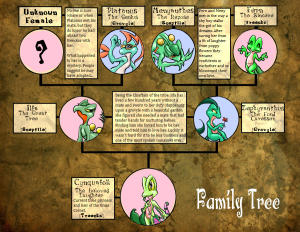To teach children sex education, use age-appropriate resources and open, honest communication from an early age. This can help them understand their bodies and make informed decisions about relationships in the future.
Additionally, introducing topics such as consent and boundaries is crucial for their overall safety and well-being.
Table of Contents
ToggleThe Importance Of Sex Education
Starting Early For Better Understanding
Beginning sex education early increases awareness and understanding.
Promoting Healthy Relationships
Sex education encourages healthy and respectful relationships.
Breaking Taboos
In order to ensure the sexual well-being of children, it is crucial to break the taboos surrounding sex education. By addressing cultural stigmas and overcoming misconceptions, we can create a safe and open environment for children to learn about their bodies and understand healthy relationships. Let’s explore how we can tackle these challenges head-on.
Addressing Cultural Stigmas
The diverse cultures and beliefs in our society often contribute to the stigma around discussing sex education with children. However, it is essential to remember that providing accurate and age-appropriate information about this topic is a fundamental right of every child. By acknowledging and respecting cultural differences, we can create a more inclusive approach to sex education.
Some strategies to address cultural stigmas include:
- Promoting cultural sensitivity: Recognize and value the importance of various cultural practices and beliefs when delivering sex education.
- Engaging with parents and communities: Foster open dialogues with parents and communities to understand their concerns and dispel misconceptions about sex education.
- Partnering with cultural organizations: Collaborate with organizations that specialize in particular cultural groups to develop sex education resources that are culturally appropriate.
Overcoming Misconceptions
Misconceptions surrounding sex education can hinder its effectiveness and acceptance. By addressing these misconceptions, we can ensure that children receive accurate and reliable information that will guide their understanding of their bodies and relationships.
Some misconceptions that need to be addressed include:
- Sex education promotes promiscuity: On the contrary, comprehensive sex education equips children with the knowledge and skills to make informed choices and establish healthy relationships.
- Sex education conflicts with religious values: Sex education can coexist with religious values by emphasizing the importance of respect, consent, and responsible behavior.
- Parents are solely responsible for sex education: While parents play a vital role, schools and other educational institutions can provide a structured and inclusive learning environment for children to receive comprehensive sex education.
Ways to overcome these misconceptions include:
- Providing accurate information: Ensuring that the information provided in sex education programs is evidence-based, medically accurate, and aligned with age-appropriate guidelines.
- Engaging with religious leaders and communities: Collaborating with religious leaders to bridge the gap between religious values and comprehensive sex education.
- Offering parent education: Conducting workshops or seminars for parents to address their concerns and misconceptions about sex education.
Creating A Safe Learning Environment
Fostering a safe learning environment to teach children about sex education is crucial for their holistic development. Empowering young minds through open communication and age-appropriate resources helps in promoting self-awareness and fostering healthy relationships. Creating a supportive space encourages dialogue and understanding, setting a strong foundation for informed decision-making.
Age-appropriate Education
Teaching children about sex education is a crucial aspect of their development, helping them understand and navigate their bodies, relationships, and health. Taking into account the different age groups when providing sex education is essential to ensure that the information is delivered in a manner that is both sensitive and tailored to their developmental stage.
Tailoring Content For Different Age Groups
When delivering sex education, it’s vital to tailor the content to suit the cognitive and emotional maturity of the children. For younger children, focusing on basic concepts such as body parts and boundaries can form the foundation of their understanding, while older children may benefit from more in-depth discussions about puberty, consent, and healthy relationships.
Avoiding Overwhelming Information
Young children can easily become overwhelmed if presented with too much information all at once. Breaking down the content into manageable and digestible segments, delivered in an age-appropriate manner, ensures that children can process and comprehend the information effectively, without feeling overloaded or confused.
Involving Parents And Guardians
Teaching children about sex education is an essential part of their development. While it is crucial for schools to provide this education, involving parents and guardians is equally significant. When parents are actively involved in their child’s sex education, it promotes a healthier and more open environment for discussions. In this article, we will explore two key ways to involve parents and guardians: promoting family discussions and providing resources for support.
Promoting Family Discussions
Family discussions about sex education play a vital role in shaping a child’s understanding and attitudes towards this important topic. It is crucial to create a safe space where children feel comfortable asking questions and parents can provide accurate information. Parents can start these conversations by:
- Initiating open-ended discussions about body changes, consent, and relationships
- Encouraging questions and actively listening without judgment or discomfort
- Using age-appropriate language and explanations to ensure understanding
By promoting family discussions, parents can address misconceptions, clarify doubts, and reinforce the values and principles that guide healthy sexual relationships.
Providing Resources For Support
Supporting parents and guardians in their role as sex educators is integral to a comprehensive approach to sex education. Schools can collaborate with parents by offering resources that empower them to navigate these important conversations. Some effective ways to provide support include:
- Sharing recommended books, websites, or educational videos that align with age-appropriate curriculum
- Hosting workshops or webinars that address commonly asked questions and concerns parents may have
- Creating a parent resource page on the school’s website that offers valuable information and guidance
When parents feel equipped with reliable resources, they are more likely to engage in meaningful discussions and provide accurate information to their children.
Teaching Consent And Boundaries
Teaching children about consent and boundaries is an essential part of sex education that empowers them to develop healthy relationships and respect others. By providing them with the necessary knowledge and understanding, we can help create a safer and more inclusive society.
Empowering Children To Set Boundaries
Empowering children to set boundaries is crucial in teaching them about consent. Encouraging them to assert their comfort levels and communicate their feelings openly fosters a sense of control and self-respect. By empowering children to recognize and articulate their boundaries, we equip them with the tools to navigate social situations confidently and assertively.
Emphasizing Respect For Others
Emphasizing respect for others is a fundamental aspect of teaching consent and boundaries. By instilling the value of empathy and understanding in children, we guide them to acknowledge and honor the boundaries of their peers. Teaching children to respect the autonomy and decisions of others promotes healthy and mutually respectful relationships, contributing to a culture of consent and understanding.
Addressing Gender And Sexual Diversity
When educating children about sex and relationships, it’s important to ensure that the curriculum includes a comprehensive understanding of gender and sexual diversity. This is crucial for creating an inclusive and accepting environment where all children feel valued and understood. By addressing topics related to gender identity and sexual orientation, we can promote empathy, respect, and understanding among young learners.
Promoting Inclusivity And Acceptance
Promoting inclusivity in sex education means going beyond traditional norms and acknowledging that not everyone fits into binary gender categories. It involves recognizing and respecting diverse gender identities such as non-binary, genderqueer, and transgender. By discussing these topics in an age-appropriate manner, children can develop empathy and respect for individuals with different gender expressions. This helps to foster a culture of acceptance and support for all gender identities within the classroom and beyond.
Challenging Stereotypes
Challenging stereotypes in sex education involves addressing and debunking misconceptions and biases related to gender and sexual orientation. It’s important to provide children with accurate information about the diversity of sexual orientations, emphasizing that there is no one “normal” way to experience gender or sexuality. By doing so, we can create a more inclusive environment where children feel empowered to embrace their own identities and support others in doing the same.

Credit: www.everydayhealth.com
Evaluating Effectiveness Of Programs
Measuring Impact On Knowledge And Attitudes
Evaluating sex education programs includes measuring their impact on what children learn and how they view relationships.
By assessing knowledge and attitudes, educators can determine the effectiveness of the curriculum used.
Adapting Based On Feedback
Feedback from teachers and students is crucial in adapting sex education programs to meet evolving needs.
Regular evaluation and adjustment help in ensuring that the material remains relevant and engaging for children.
Frequently Asked Questions Of Teach Children Sex Education
Why Is It Important To Teach Children Sex Education At An Early Age?
It is important to teach children sex education at an early age to promote healthy attitudes towards relationships and bodies, prevent sexual abuse, and equip them with the knowledge to make informed decisions.
How Can Parents Start The Conversation About Sex Education With Their Children?
Parents can start the conversation about sex education by using age-appropriate language, creating a safe and open environment for discussion, answering questions honestly, and emphasizing the importance of respect and consent.
What Are The Key Topics To Cover When Teaching Children Sex Education?
Key topics to cover when teaching children sex education include body parts and anatomy, understanding emotions, healthy relationships, consent, boundaries, puberty, reproduction, and internet safety.
How Can Educators Incorporate Sex Education Into School Curriculum Effectively?
Educators can incorporate sex education into school curriculum effectively by tailoring the content to different age groups, integrating it into existing subjects, involving parents and guardians, providing accurate information, and addressing diverse family structures.
Conclusion
Teaching children about sex education is a crucial step in their personal development. By providing them with accurate and age-appropriate information, we can help them make informed decisions and develop healthy attitudes towards their bodies and relationships. It is important to approach this topic with sensitivity and open communication, ensuring that children feel supported and empowered to navigate the complexities of their own sexuality.
Through education and understanding, we can create a safe and inclusive environment for all children to grow and thrive.

Mother of Two children. I’m a former teacher with a background in child development and a passion for Good parenting. I understand child development and know how to develop activities to help children learn and grow. Spare time, I enjoy spending time with my family, reading, and volunteering in my community. Read More








